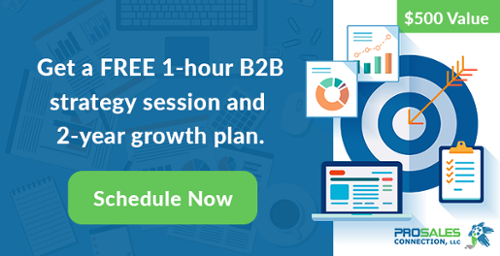In the current environment of nonstop marketing messages, it has become even more critical for salespeople to develop a strong prospecting cadence to reach their target audience.
Salespeople cannot rely on a sporadic phone call or one-size-fits-all email to start a conversation with a prospect. We see too many salespeople rely on mindless calling or sending generic emails, thinking they will convert a prospect into a customer. The sales industry has changed, and it’s leaving behind plenty of good salespeople who are not willing to evolve some of their skills and habits to be great.
Salespeople need to work smarter in today’s environment. That means developing a consistent prospecting cadence making sure phone, email, and social media are in harmony. When these communication methods work together, you have a better opportunity to have quality conversations with prospects to sell your product or solution.
First, though, before you even get to the point of making a pitch to a prospect, your sales organization or marketing team must create awareness. And then build interest.
That is the result of developing a consistent cadence or pattern that you’ve optimized over time for outbound contact with prospects. This way, your prospects are aware of your product or solution even before making initial contact, increasing your chances of converting the prospect.
Your sales team should then develop a formula of “touches x days” with the prospect. Some teams follow a 7x10 formula of seven touches every ten days. Or, your team’s cadence might be 10x30, depending on the nature of your industry and the decision-makers you are trying to reach.
As you move through the sales cycle, it is important to follow the plan for using communication channels of phone, email, and social media to reach your audience. And you also need to understand who your audience is.
Prospecting Cadence: Phone Communication
A phone call is the preferred method of communication to have authentic conversations about your product or solution. But, there is a significant difference between prospecting to mid-level managers and C-Suite executives over the phone.
With mid-level contacts at small and medium-sized businesses, you can be more aggressive with the number of phone calls because the sales process will generally follow a shorter sales cycle. The prospect often takes less than 30 days to decide or purchase, so a more compact cadence is required.
You should consider calling every three days for 4-5 attempts, then let the prospect sit for a week before re-engaging if they do not reply. The rhythm is three days, three days, three days, three days, and then seven days. If you do not hear back after this period, then try again in two days. By the time you reach a final call aiming for the prospect to make a decision, you will have established a rhythm to your contact and stayed top-of-mind in the sales cycle.
But, if you are selling to the C-Suite with a six-figure solution, this will be a much longer, 6-12 month sales cycle. This requires more patience with your phone calls.
You should also be more measured in your follow-up. You do not want to call every three days, which would turn off a high-level executive, potentially ending the opportunity prematurely. Instead, you should space out phone calls every week or every other week.
Also, because this sales cycle is much longer, there are more opportunities to incorporate email and social media channels in your prospecting cadence.
Prospecting Cadence: Email Communication
Email communication with a prospect should follow a similar pattern as the phone but occur less frequently.
When engaging a mid-level manager from our previous example, you should reach out every few days, then let the prospect cool off for a week or two. You do not want to flood the prospect’s inbox with unopened emails with similar messaging.
If you do not receive a response at the end of your time period, shelf the prospect, make a note in your CRM and plan to revisit the prospect in the next quarter.
Then, when you initiate contact again, come back with a different message about your product or solution. Then, let it cool and wait until you receive a response from the prospect. Or continue to repeat the process of coming back the next quarter with a new message.
If you are engaging a C-Suite executive, you should develop a cadence of regular emails with your phone calls as part of the longer sales cycle requiring various touches to ultimately reach a deal.
The key is not to give up prospecting until you hear “yes” or “no.” Until you receive a definitive answer, you should continue following the prospecting cadence plan. And, consider utilizing social media whenever possible.
Prospecting Cadence: Social Media Tips
When using social media, it is important to remember which channels are appropriate to initiate contact with a prospect.
You should not engage prospects over Facebook. There is simply no right way to go about prospecting on Facebook without potentially offending the person.
But, it is appropriate to engage prospects on LinkedIn. There is a universal understanding that LinkedIn is a business-driven social media outlet where people come together to network and do business.
Then, there is the gray area of Twitter. An individual will identify whether they use Twitter for business or personal reasons. If you see a prospect with a professional profile page, industry content on their timeline, and other markers of a business-oriented social media presence, then it is appropriate to engage the prospect.
But, if the individual is tweeting exclusively about their family and what they had for dinner, you should not approach them with a message about your product or solution. It is a personal page for them, and the invasion of their online presence may not be well-received.
Putting it All Together for Prospecting
When your sales team comes together to discuss ways to generate more revenue and create growth opportunities, consider refining your prospecting cadence.
It does not have to remain an abstract concept that each team member interprets differently. Have a plan, make sure everyone buys into the plan, and follow through with regular phone calls, emails, and social media contact.
Following this process will improve your conversations with prospects, creating more opportunities to close deals.
ProSales Connection is also offering an opportunity to grow your revenue pipeline. Plus, schedule more appointments for your sales team. Contact me directly to discuss how ProSales Connection can help your sales team grow!








